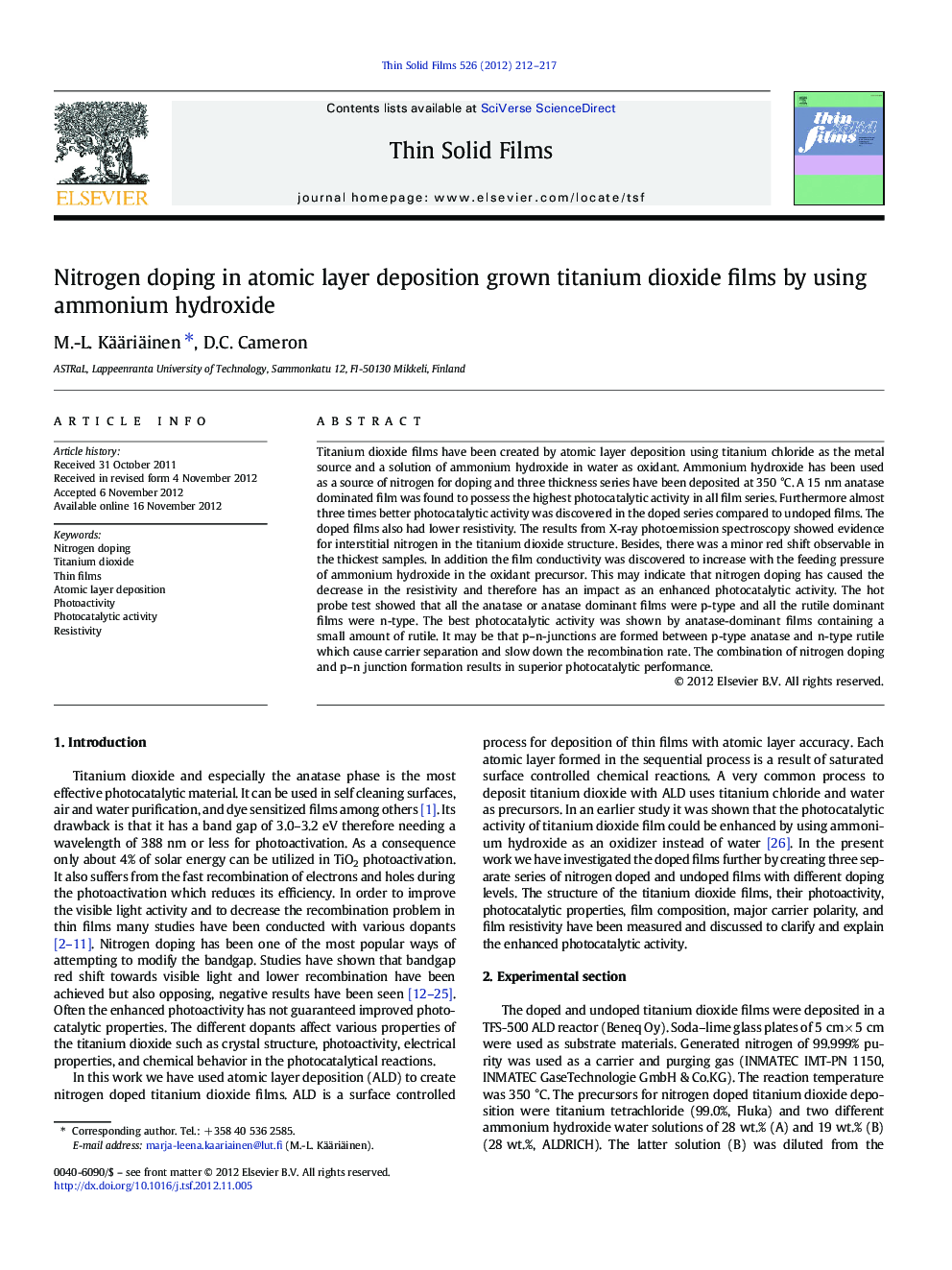| Article ID | Journal | Published Year | Pages | File Type |
|---|---|---|---|---|
| 1666467 | Thin Solid Films | 2012 | 6 Pages |
Titanium dioxide films have been created by atomic layer deposition using titanium chloride as the metal source and a solution of ammonium hydroxide in water as oxidant. Ammonium hydroxide has been used as a source of nitrogen for doping and three thickness series have been deposited at 350 °C. A 15 nm anatase dominated film was found to possess the highest photocatalytic activity in all film series. Furthermore almost three times better photocatalytic activity was discovered in the doped series compared to undoped films. The doped films also had lower resistivity. The results from X-ray photoemission spectroscopy showed evidence for interstitial nitrogen in the titanium dioxide structure. Besides, there was a minor red shift observable in the thickest samples. In addition the film conductivity was discovered to increase with the feeding pressure of ammonium hydroxide in the oxidant precursor. This may indicate that nitrogen doping has caused the decrease in the resistivity and therefore has an impact as an enhanced photocatalytic activity. The hot probe test showed that all the anatase or anatase dominant films were p-type and all the rutile dominant films were n-type. The best photocatalytic activity was shown by anatase-dominant films containing a small amount of rutile. It may be that p–n-junctions are formed between p-type anatase and n-type rutile which cause carrier separation and slow down the recombination rate. The combination of nitrogen doping and p–n junction formation results in superior photocatalytic performance.
► We found all N-doped and undoped anatase dominating films p-type. ► We found all N-doped and undoped rutile dominating films n-type. ► We propose that p–n junctions are formed in anatase–rutile mixture films. ► We found that low level N-doping has increased TiO2 conductivity. ► p–n junctions and N-doping result in good photocatalytical performance.
